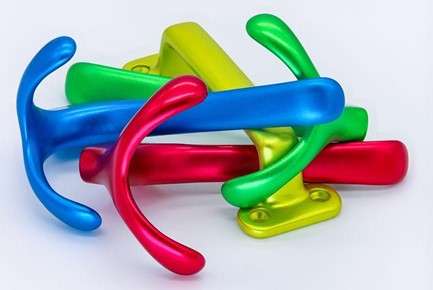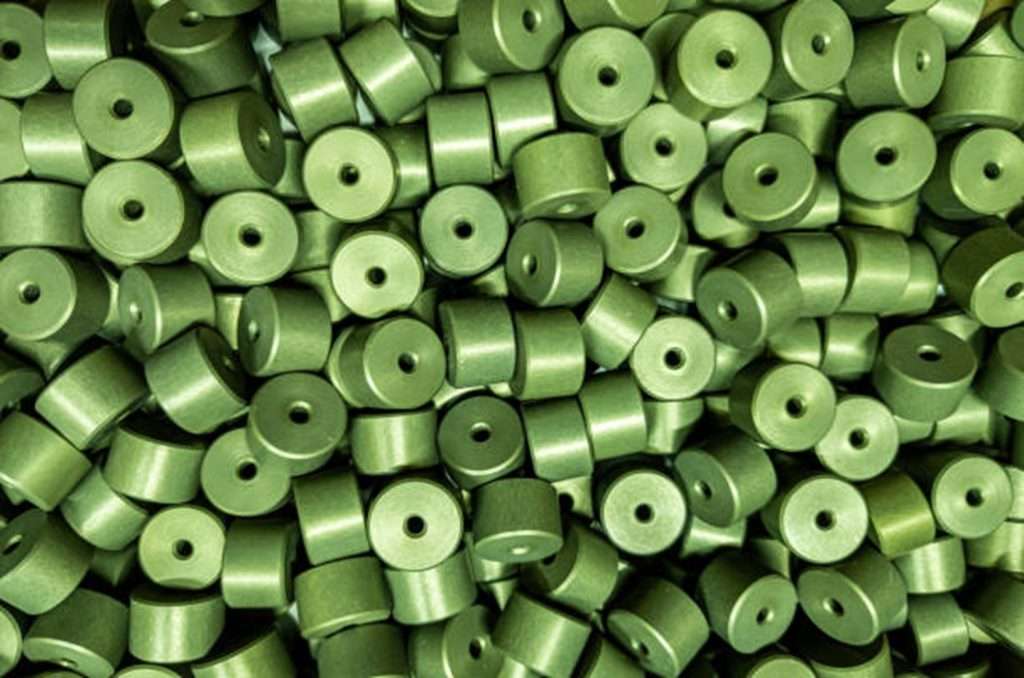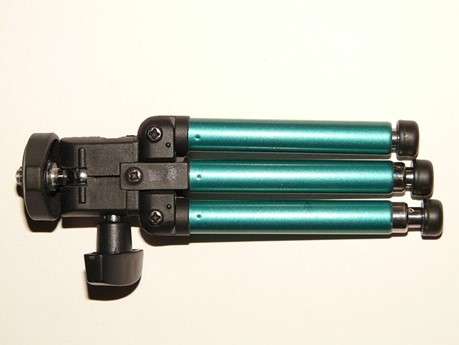
Anodized aluminum part
Introduction
Adding surface finishes to materials and machined parts is an excellent way of increasing the longevity of such components. One such finish is anodization. The use of anodization as a post-processing surface finish is common among metals, with aluminum being one of the most compatible materials. However, if you’re finding it hard to pick the perfect surface finish, then this article is your ideal guide.
This article will walk you through anodization, the common uses of anodized aluminum, and the importance of anodized aluminum polish.
Definition of Anodized Aluminum
Anodized aluminum simply refers to an aluminum material or part that has gone through the anodization process. This process involves an electrochemical reaction that converts the outer surface of the aluminum into a scratch-resistant, durable, and corrosion-resistant surface. The anodized aluminum polish also adds a shine to the aluminum surface, increasing its aesthetic appeal.
Importance of Cleaning and Polishing Anodized Aluminum
Why exactly should you polish anodized aluminum? Well, here are three reasons why:
- Aesthetic Appeal: As mentioned earlier, the anodized aluminum polish adds a glossy shine to the metal, which makes it even more beautiful.
- Longevity: Polishing anodized aluminum increases the longevity of the aluminum part. Polished anodized aluminum has been proven to have a longer lifespan than unpolished aluminum parts.
- Ease of Maintenance: Polished anodized aluminum always has a smooth feel, making them quite easy to clean and maintain. The polish makes the part impervious to scratches and other mechanical injuries, reducing maintenance costs.
The Anodization Process
Anodizing is an electrochemical process that involves forming a more stable film or protective coatings around a metal surface. In the case of aluminum, it creates a durable layer of aluminum oxide fully integrated with the actual material.
The process occurs in an acidic-electrolyte bath with a flowing direct current on the cathode and anode plates. The cathode is usually platinum, lead, or carbon rod, while aluminum serves as the anode.
The anodizing process involves two main steps s:
- Pre-treatment: It involves the removal of contaminants and other impurities from the material. This is essential because if the material is not cleaned before anodization; it will remain part of the end product, affecting the aesthetic and durability of the process.
- Electrolysis: The main process of anodization. Here the aluminum is submerged in the acid bath, where the change of ions between the aluminum component and the anode occurs in the presence of a direct electric current. The result is the formation of a protective anodic aluminum oxide coating around the material. The barrier formed is more resistant and durable than the initial aluminum metal.
Advantages of Anodized Aluminum
Aluminum is one of the most used materials for different fabrications because of its suitable physical and chemical properties. Also, it possesses excellent machining properties, among other beneficial characteristics.
The main advantages of anodized aluminum polish include:
Enhanced Material Properties
This finishing improves the physical and chemical properties of the part’s surface. For example, it increases resistance to corrosion, abrasion, scratch, and harsh weather conditions. In addition, since its an electrochemical process, the anodized barrier becomes part of the material. Therefore, it does not chip off like paint or powder coatings.

Green Anodized aluminum part
Improved Aesthetics
Anodizing enhances the quality and appearance of your aluminum part. It could also integrate different color varieties, such as clear anodized aluminum, black anodized aluminum, blue, grey, gold, etc., and anodized aluminum.
Other benefits of Anodized aluminum include:
- It improves durability
- It enhances insulating properties.
- It does not affect the dimension, making it a suitable finish for parts with tight tolerances.
Common Uses of Anodized Aluminum
Anodizing is a popular finishing option. Anodized aluminum is used in different industries, including aerospace, architecture, in the manufacture of household goods.
Below are more structures that use anodized aluminum polish parts

A tripod machine with anodized aluminum
- Light fixtures
- Casings of electronic gadget
- Kitchen utensils
- Radio equipment
- Patio covers
- Camera components
- Window frames
- Mailboxes
- Bathroom accessories, etc.
Try Prolean Now!
Can Anodized Aluminum be Polished?
Yes, anodized aluminum can be polished. Indeed, anodized aluminum possesses marked beneficial properties – the anodized features may start to wear off after a while. At this point, you try to clean it to improve its appearance, but anodized aluminum is challenging to clean, even with rigorous cleaning agents.
Therefore, you may have to replace and polish the dull surface to smoothen and enhance the appearance. Also, polishing further improves the material’s durability, aesthetics, and other surface properties. Therefore, the final product – an anodized aluminum polish part you obtain is a more beautiful one with increased mechanical characteristics.
How to Polish Anodized Aluminum
Polishing an anodized aluminum involves removing the anodized coatings, usually with a suitable base such as sodium hydroxide.
The process of polishing an anodized material involves first submerging the material in a water bath containing a cleaning agent – caustic soda. After a while, you start to notice air bubbles around the material. This time, you have to raise the aluminum piece to rid it of the smut – residues of the anodizing process. You may need to add more sodium hydroxide to enhance the de-anodizing.
When you notice the blemish and stains disappear from the piece, remove it from the bath, rinsing it with clean water and leaving it to dry in the open air for a while. Ensure that there is no anodized residue on the piece. You can then use silicon oxide sandpaper to remove other scratches to enhance and ready the piece for polishing.
Before adding polishes, you may repeat the previous processes if you are not yet satisfied with the surface properties. Achieving a suitable anodized aluminum polish can be challenging, so you may need to consult an expert. Besides polishing, you may apply some wax and coatings to improve the material’s appearance, durability, and longevity.
Choosing the Right Tools and Materials
When manufacturing machine parts and other components, making the right tools, materials,s and equipment choices cannot be overemphasized. For example, when preparing anodized aluminum for polishing, some may choose to use other kinds of sandpaper instead of silicon oxide. However, the former is less efficient than the latter and may slow down the polishing process or reduce its effectiveness.
Best Polish for Anodized Aluminum
After preparing the anodized material for polishing, and removing all the contaminants and anodized residue from the aluminum piece, the next thing is to find a suitable aluminum polish. Ideally, a commercial aluminum polish should suffice. But due to differences in product grade and effectiveness, you may use Autosol anodized aluminum polish. It is composed of fine polishing particles, providing an optimum surface finish for your anodized aluminum surfaces. Natural ingredients like beeswax too may prove effective for polishing anodized aluminum parts.
Anodized vs Polished Aluminum
Anodized aluminum is a pure metal improved by an electrochemical process. The process involves creating oxides of the metal, allowing it to form a protective covering. On the other hand, polished aluminum refers to one that has been chemically purified and polished. Often, polished and anodized aluminum may be used interchangeably.
However, it is easy to distinguish each material by observing its physical appearance. While anodized aluminum displays a matte, gloss-like finish, devoid of the typical metallic luster; polished aluminum appears to be highly reflective, almost reflecting light like a mirror.
Another difference is the durability of the material. Generally, anodized aluminum has better mechanical and chemical properties than polished aluminum. They tend to be more resistant to abrasion, and scratch, resulting in better durability and longevity. However, either finish requires similar maintenance requirements. Anodized and polished aluminum products require regular cleaning with a mild cleaning agent to retain their beautiful appearance.
Prolean: Your Aluminum Anodizing Expert
Beyond understanding the anodization, polishing, and other surface finishes, you need to partner with an expert to ensure the success of your fabrication. At ProLean, we are an expert at custom manufacturing and providing top-notch post-processing solutions. We offer on-demand manufacturing solutions, ensuring that your fabrication meets all the required design specifications.
Our facilities consist of up-to-date equipment for CNC machining, sheet metal fabrication, 3D printing, and other related technologies for your manufacturing needs. We boast highly skilled and experienced professionals with proficient knowledge of the latest manufacturing processes.
Once you upload your CAD files, we will provide you with a 1-hour quotation. So, when looking to anodize, polish, or need any other manufacturing solution, do not hesitate to contact us – ProLean.
Conclusion
Anodization involves you coating the surface of a metal with a more resistant metallic component, such as the oxides of the metal. Post-processing operations like anodization and polishing are essential for enhancing the appearance and quality of your fabricated parts.
Though aluminum possesses excellent mechanical and chemical properties, making it one of the most used metals. However, the application of finishes to this part further improves these properties, ensuring that you utilize these parts for extended periods. When looking to customize your parts or improve the surface property, consider consulting with an expert to ensure the seamless and accuracy of the process.
Read More: Hard Coat Anodizing: Quick Guide To Process, Benefits & Tips
FAQ
Should You Polish Anodized Aluminum?
Ideally, anodization is a suitable finish for your aluminum part, requiring no other finishes. However, you can also polish the anodized aluminum to enhance its mechanical and chemical features further. An anodized aluminum polish part will be more durable than singly polished or anodized aluminum.
Can Anodized Aluminum Wear Off?
Yes, even after anodizing your aluminum part, the anodized feature may wear off over time. However, it usually takes a long time for this to occur, sometimes decades. The process creates a protective oxide layer around the aluminum, which generally lasts longer than paint or powder coatings.
What is the anodization process? Anodizing is an electrochemical process that forms a stable protective film or coating around a metal surface. For aluminum, it creates a durable layer of aluminum oxide that is fully integrated with the material. The process occurs in an acidic-electrolyte bath and involves two main steps: pre-treatment to remove contaminants and electrolysis to form the anodic aluminum oxide coating.
What are the benefits of anodized aluminum?
Anodized aluminum enhances the physical and chemical properties of a part’s surface, increasing its resistance to corrosion, abrasion, and harsh weather conditions. It also improves the part’s aesthetics, as it can incorporate various color varieties. Anodized aluminum doesn’t affect the dimension of the parts, making it a suitable finish for parts with tight tolerances.
Where is anodized aluminum used?
Anodized aluminum is used in various industries, including aerospace and architecture, and in the manufacture of household goods like light fixtures, casings of electronic gadgets, kitchen utensils, patio covers, camera components, window frames, and bathroom accessories.
How is anodized aluminum polished?
Polishing anodized aluminum involves removing the anodized coatings, usually with a suitable base such as sodium hydroxide. After preparing the material and removing all contaminants, a suitable aluminum polish is used. This process can be challenging, and it may be beneficial to consult an expert.
What is the difference between anodized and polished aluminum?
Anodized aluminum is a pure metal improved by an electrochemical process, leading to a matte, gloss-like finish. In contrast, polished aluminum is chemically purified and polished to have a highly reflective surface. While anodized aluminum is generally more resistant to abrasion and scratches, resulting in better durability and longevity, both require regular cleaning to maintain their appearance.
Who should I contact for professional anodizing and polishing services?
For professional anodizing and polishing services, you should contact a manufacturing expert like ProLean, which provides on-demand manufacturing solutions, ensuring that your fabrication meets all the required design specifications. ProLean also offers a variety of post-processing solutions, including anodizing and polishing.
Related:




0 Comments